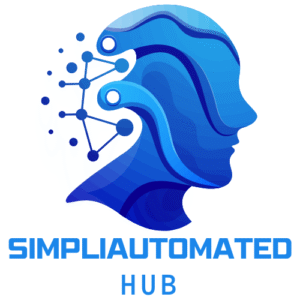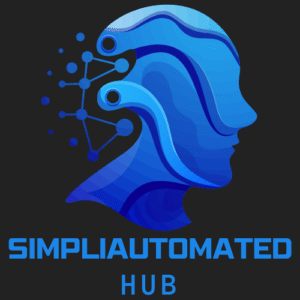What if you could launch a high-margin business that runs 24/7—even while you sleep—and rides the AI automation wave that’s projected to add over $4 trillion to the global economy by 2030?
You’re not alone if you’re eyeing AI automation as the next big leap, but wondering: How do actual businesses carve out profitable, repeatable niches rather than getting lost in a sea of generic tools?
Right now, technophiles, marketers, and founders are discovering you don’t need to be a coding wizard to turn automation into revenue—you need laser focus, strategic positioning, and a practical game plan.
Craving results that go beyond hype? The real winners in 2025 will be the ones who:
- Pinpoint urgent, unsolved problems where AI can save clients time, money, or headaches
- Validate demand using real-world signals before investing heavily
- Combine off-the-shelf tools with smart customization—delivering “wow” moments, not just workflows
- Productize their solutions for repeatable sales (spoiler: modular automation sells itself)
- Turn every delighted user into a brand advocate with clear ROI and transparent results
No more scattered efforts or building “just another bot” nobody needs. You’ll learn how to make the right bets, package your expertise, and build a sustainable business that scales with growing demand.
If you’re looking for a guide that blends practical steps, industry data, and straightforward advice—all without drowning you in jargon—you’re in the right place.
Ready to see why choosing the perfect niche is the single most critical factor (and how experts are doing it differently)? The first step is all about narrowing your focus so you can solve the right problems—and absolutely own your space.
Choosing Your Niche and Defining Your Business Model
Picking the right niche is the single most important decision you’ll make when launching your AI automation business in 2025.

Trying to “do it all” is a fast track to getting lost in the crowd—laser-focus wins every time.
Spotting High-Value, Unsolved Pain Points
Look for “hair-on-fire” problems that clients are actively searching to solve. Ask: Where are businesses hemorrhaging time, money, or talent?
Top-performing AI automation niches right now include:
- Marketing automation for B2B SaaS, reducing campaign setup time by 70%
- Financial workflows for SMBs handling invoicing and forecasting
- E-commerce automation (inventory, customer support, personalized offers)
- AI-powered real estate lead follow-up for agents
- Customer service bots for local businesses needing 24/7 coverage
Picture this: a real estate AI assistant that follows up with every hot lead in under 30 seconds—no human needed.
Weighing Your Business Model Options
Choosing the right model shapes your day-to-day and future scaling:
- Service-Based: Consulting or managed automation (think: hands-on, high-touch)
- Product-Based: SaaS subscriptions (stable, predictable income)
- Hybrid: Pair consulting with proprietary tools for max flexibility
Real-world trend: Over 60% of AI automation startups in 2024 began in a single niche before expanding their stack.
Becoming the “Go-To” in Your Sector
Specialize relentlessly. Want instant authority? Narrow your audience and own a niche.
To dial in:
- Analyze market size (Is it big enough? Use SEMrush/Google Trends data.)
- Gauge willingness to pay—are clients already buying similar solutions?
- Double-check: Does the problem align with your expertise or story?
Example: An agency that solely automates social media scheduling for e-commerce stores. Within 18 months, they became the default choice in their space.
Aligning Your Mission with Market Needs
Your mission should leap off the page as an answer to your market’s burning problems.
- Translate your vision and values into tangible services (“We make B2B cold outreach frictionless”)
- Craft a tagline and story that sticks: “AI that lets local businesses sleep while bots close leads”
- Balance innovation with practicality—clients want “wow” but also reliability
If you nail the fit, you’ll hear clients say, “You’re the first one who actually gets what we need.”
Bold summary: The fastest path to a profitable AI automation business is pinpointing an urgent niche and matching it with a model that leverages both what’s trending and what you do best. You don’t need to serve everyone—just solve one hairy problem better than anyone else.
Validating Market Demand and Solution Fit
Identifying a winning AI automation niche starts with real-world data, not just a gut feeling.
Picture this: you’re planning to launch AI-powered marketing automation for SaaS companies and want to know if anyone will actually pay for it.
Tap Into What the Market Wants
Leverage these power tools to cut through the noise:
- Google Trends: See if searches for “AI workflow automation” or “SaaS AI tools” are rising.
- SEMrush: Spot search volumes, rank competitors, and surface related questions people ask.
- ChatGPT: Rapidly test messaging or ask, “What gaps exist in AI finance process automation?”
Don’t guess—let the search data guide you.
Listen to Your Future Customers
Validation means real feedback, not hypothetical approval.
- Message prospects via LinkedIn or industry forums with short surveys.
- Run targeted polls in AI business groups or niche Slack communities.
- Launch a smoke test page (“Sign up for early access—no credit card needed”).
Look for at least 5-10 people ready to join a pilot or request a demo—that’s a strong signal they’ll pay, not just chat.
“If you can’t fill up your first Zoom call with interested prospects, you’re not solving a burning problem.”
Measure Demand, Not Just Attention
Sizing up the true demand goes far beyond counting likes:
- Track monthly Google search volume (aim for 500+ searches/month for problem keywords).
- Analyze competitor review velocity—are new testimonials popping up on leading platforms this quarter?
- Secure tangible precommitments: pre-sales, letters of intent, or paid pilots are worth their weight in gold.
“Interest isn’t enough. Validate with actual money or genuine buying signals.”
Iterate Fast Using the Data
Ready to adjust course? Here’s your blueprint:
- Create a simple scorecard: Rate your niche idea 1–5 on criteria like “market size,” “pain level,” “buying urgency,” and “competitive gap.”
- Update your positioning: If surveys show people want AI onboarding automation, but nobody is paying for chatbots, pivot immediately.
- Reassess weekly: New trends pop up constantly—AI automation was a $34 billion market in 2023 and is growing by over 20% annually. Don’t get left behind.
When in doubt, aim for actions over assumptions: collect interest, secure commitments, and adapt your offer. The fastest path to profit is relentlessly validating what people will pay for—right now.
Building or Leveraging AI Automation Tools
Picture this: your client asks for seamless lead follow-up, real-time analytics, or a snappy onboarding process. Do you build from scratch or plug into what’s already out there?

The “build vs. leverage” decision is your first crossroads.
- Use low-code/no-code platforms like Zapier AI, Make, or SuperAGI for most standard automations—97% of small AI automation businesses in 2024 started this way.
- Opt for custom solutions only if you absolutely need unique workflows, next-level data customization, or full control over every AI step.
A clear niche lets you figure out which toolkit matches your ambition—and your wallet.
—
Mapping the Modern AI Stack: What’s In Your Toolbox?
Today’s top automation platforms are all about speed, integration, and flexibility. Here’s what rises to the top for 2025:
- Zapier AI: Unbeatable for connecting over 6,000 apps, automating marketing and sales in minutes, and offering AI-powered logic for non-coders.
- Make: If you crave visual workflow building, Make’s drag-and-drop UI is built for rapid prototyping and handling branching logic intuitively.
- SuperAGI: Prefer building complex, agent-based workflows? SuperAGI gives you modular AI agents for tailored, industry-specific automations.
For deeper integration, specialized tools shine:
- HubSpot CRM + AI: Personalize and automate customer conversations, score leads, and improve retention automatically.
- Jasper: Turbocharge content creation with AI-powered copy and campaign flows.
- Industry-specific automations: From invoice bots for SMBs to property data pipelines in real estate, these tools drive vertical results.
—
Customization & Prototyping: Move Fast, Show Value
You don’t need a PhD in AI to go bigger. AI agent builders and scripting tools open doors to:
- Bespoke onboarding bots for SaaS startups
- Invoice automation workflows for local business clients
- E-commerce recommendation engines and more
Demo quick wins with rapid prototyping: most teams deliver “Wow!” moments in under 48 hours with modern platforms.
But remember—solid data management is your foundation. Clean data means successful AI. Poor data? Expect headaches (and angry clients).
—
Achieving the Right Balance of Cost, Scalability, and Flexibility
Smart founders weigh:
- Time-to-market: Off-the-shelf = launch in days. Custom scripts = weeks to months.
- Upfront costs vs. maintenance: Low-code tools often start at $50–150/month; custom can mean $5K+ upfront and ongoing dev costs.
- Scalability & flexibility: Off-the-shelf is fast but sometimes rigid; custom is flexible but resource-intensive.
The winning move? Start lean, prove ROI, then dial up customization when (and only when) the math works.
—
When building your AI automation business in 2025, choosing the right platform mix isn’t just technical—it’s strategic. Small wins with proven tools build trust, create case studies, and give you breathing room to innovate for bigger, more lucrative projects.
Developing, Packaging, and Delivering Your AI Automation Solutions
Turning your AI expertise into scalable, repeatable revenue starts by productizing your services—think “automation in a box” instead of reinventing the wheel every time.
Packaging your solutions into modular offerings (for example, plug-and-play onboarding bots or pre-built invoice workflows) means you can sell the same high-value results again and again.
Picture this: a client purchases your “SMB Financial Forecasting Bot,” receives easy setup instructions, and in under two hours, they’re running automated reporting that saves them 10+ hours weekly.
Standardization and Data Clarity
Repeatability is only profitable if you maintain clarity and reliability in data use.
Follow these key steps for each solution:
- Standardize data inputs (e.g., CSV templates or API-ready connectors)
- Pre-test integrations with popular customer platforms (like Shopify, HubSpot, or Salesforce)
- Add clear logging and user prompts to flag unexpected data issues
This approach helps build trust and keeps support tickets low—nothing tanks momentum faster than ambiguous output.
Deployment: Smooth Onboarding and Integration
The path from signed contract to live automation should be “drag-and-drop” easy.
To make new client onboarding seamless:
- Offer simple setup guides or guided calls
- Build your solution to snap into existing software stacks (using popular no-code platforms like Zapier AI or Make can speed things up)
- Create checklists for required client info (e.g., logins, account IDs)
Smooth deployment not only impresses clients—it makes every case study easier to collect.
Real-World Packages & Avoiding Pitfalls
Here are three high-demand, ready-to-launch examples:
- Financial forecasting bots for SMBs (reduce manual reporting, spot cash flow issues early)
- AI-powered chatbots for e-commerce (24/7 support, increase sales conversions by up to 15%—a stat validated in recent Shopify trend reports)
- Vertical-specific bundles (e.g., local business automation with appointment booking and follow-up sequences)
Watch out for common delivery stumbles:
- Over-relying on “one size fits all”—custom tweaks are usually needed
- Weak error handling—if the AI fails, make it obvious and easy to fix
Client-Ready Experiences: Education, Transparency, Trust
A successful rollout isn’t just technical—it’s relational.
Build client-ready experiences by:
- Adding video walkthroughs and FAQs for user education
- Including a dashboard that tracks AI decisions for transparency and governance
- Requesting early testimonials—clients love to share “before and after” stories when results are visual and measurable
“Every delighted client becomes your next marketing asset.”
Launching AI automations that are reliable, transparent, and easy to use turns first clients into repeat buyers—productize, teach, and build trust from day one for scalable growth.
Client Acquisition, Onboarding, and Relationship Building
Landing your first AI automation clients can feel daunting—but in 2025, strategic outreach makes all the difference. The fastest-growing firms use a mix of content marketing, niche community participation, and direct networking to stand out in noisy markets.
Picture this: you’re sharing a recent client win in a LinkedIn group full of SaaS founders, and someone slides into your DMs for a demo—that’s the power of specificity and visibility.
Key outreach moves include:
- Posting solution guides or demos on LinkedIn/YouTube
- Participating in AI-focused business forums and Slack/Discord communities
- Offering free value upfront with audits, quick-win demos, or “pilot projects”
78% of AI automation buyers in 2024 reported engaging based on a hands-on pilot, not a cold pitch—the demo is your golden ticket.
Building Trust and Value Fast
Don’t just pitch features; show measurable outcomes in every proposal.
Craft proposals that highlight:
- Concrete ROI (e.g., “Save 10 hours/week” or “$5,000 monthly cost cut”)
- Case studies with before/after analytics
- Client endorsements or video testimonials
Great soundbite: “The best proof is a dashboard, not a promise.”
Regular check-ins and support touchpoints set you apart. Use automated booking links, quarterly business reviews, and quick client surveys to keep relationships warm.
- Turn one-off wins into ongoing retainers by:
- Offering automation upgrades as client needs evolve
- Bundling recurring monitoring and reporting
65% of businesses moving from pilot to retainer cite “proactive planning and clear reporting” as top reasons for continuing.
Onboarding & Measuring What Matters
Streamlined onboarding is vital—try templated setups, automated kickoff calls, and immediate small wins.
Set up KPIs every client can see on day one:
- Cost savings
- Time reduction
- Revenue increase
Feedback loops keep things fresh:
- Monthly visual performance reports clients actually understand
- Prompt requests for improvement suggestions (via email, chat, or feedback widgets)
Great quote to share: “If clients can’t see the value in three clicks, they won’t see it at all.”
Connecting quickly, delivering fast wins, and making wins visible will turn one-time buyers into loyal champions—and open the door for scalable, high-value automation partnerships that drive real profit.
Scaling and Optimizing Your AI Automation Business
Ready to take your AI automation business from scrappy upstart to industry leader? Scaling smart means expanding strategically, not just hustling harder.
Prioritize growing your offerings when you see sustained demand or repeatable wins.
Picture this: you’ve mastered marketing automation for SaaS. The next step? Offer financial workflow automation, or expand into e-commerce—one vertical at a time.
Streamline with Automation (Yes, Even for Yourself)
Leading businesses automate their own back-office processes before anything else.
Top internal automations include:
- Client onboarding and CRM management
- Invoicing and billing workflows
- Automated reporting and dashboard updates
- Lead generation and follow-up triggers
Fact: Companies that automate internal ops report up to 27% higher profit margins versus those running manually.
Leverage Trends Without Losing Focus
Stay ahead by weaving in the latest AI breakthroughs, but never at the expense of day-to-day reliability.
Fresh trends gaining traction for 2025:
- Predictive personalization for client journeys
- AI as real-time business analyst (think: instant insights, not just static dashboards)
- Plug-and-produce automated workflow templates that deploy in minutes
Take a page from early adopters using AI-generated customer insights to cut campaign design time by 40%.
Expand Your Team—And Your Safeguards
As your client roster grows, you’ll need help.
Options include:
- Hiring full-time or fractional AI ops experts
- Partnering with freelance developers or agencies
- Building a quality assurance team for data governance and transparency
Don’t forget: as regulation evolves, keeping up with data privacy and AI ethics compliance isn’t optional—it’s table stakes.
Test, Measure, and Sustain Profits
Scaling isn’t just about growth—it’s about profitability that lasts.
Key systems to bake in:
- Continuous feedback loops with clients for service refinement
- Regular performance analytics to spot what’s working (and what’s not)
- Scheduled reviews of your niche to catch shifting trends early
- Balancing automation with a human touch—clients still crave real connection
“Smart scaling is all about turning repeatable wins into lasting momentum.”
“Automate internally before offering to clients: it’s the ultimate proof of concept.”
“Regulations move fast; businesses that bake in compliance from the start stay resilient.”
Bottom line: The most scalable AI automation businesses are relentless about continuous improvement, internal efficiency, and keeping client outcomes front and center. Growth without these pillars is just busywork.
Conclusion
Building a profitable AI automation business in 2025 isn’t about wild guesses or vague ambition—it’s about solving urgent problems, leveraging the right tech, and delivering unmistakable value, faster than the competition.
You’re not just in the game to experiment with AI; you’re here to own a problem, carve out a niche, and deliver automation that clients can’t live without. The path is wide open—if you’re ready to move boldly and strategically.
—
Here’s what sets top AI automation founders apart:
- Laser-focus your offering on a single high-impact pain point—resist the urge to do it all
- Validate with real market signals: test demand through outreach, demos, and early pilot projects before investing big
- Start lean—launch with proven no-code and low-code platforms, then customize only when it pays off
- Productize your solution for repeatability: modular packages, transparent reporting, and easy onboarding drive scale
- Keep client wins visible and measurable—case studies and clear ROI transform happy customers into your best salesforce
—
Take your first steps today:
- Pinpoint the one problem you’re uniquely positioned to solve—get specific, get curious, and survey your target market directly
- Reach out to real prospects for feedback or early pilot interest—direct conversations beat assumptions every time
- Map your tech stack: shortlist the AI tools that can get you to an MVP in days, not months
- Share your first automation wins on LinkedIn or in professional communities to spark momentum and gather leads
—
Every AI automation giant started with one unsolved problem and the courage to act before the roadmap was perfect.
Lead with action, iterate with purpose, and remember: in a world hungry for efficiency, your next move can change someone’s business—and your own.
Solve one hair-on-fire problem astronomically well, and you’ll become the go-to name clients can’t afford to ignore.









